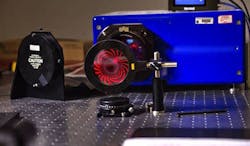
Sending a telescope into space comes at a high price, for more than one reason. Launching the Hubble Space Telescope was costly because it was heavy, due in part to its massive, rigid primary mirror and mirror mount. Building the James Webb Space Telescope, let alone launching it, is costly not only due to its weight, but also the fact that it needs a massive, intricate, and expensive mechanism to allow it to unfold and then keep its various parts aligned in space.
About the Author
John Wallace
Senior Technical Editor (1998-2022)
John Wallace was with Laser Focus World for nearly 25 years, retiring in late June 2022. He obtained a bachelor's degree in mechanical engineering and physics at Rutgers University and a master's in optical engineering at the University of Rochester. Before becoming an editor, John worked as an engineer at RCA, Exxon, Eastman Kodak, and GCA Corporation.
Sign up for our eNewsletters
Get the latest news and updates


